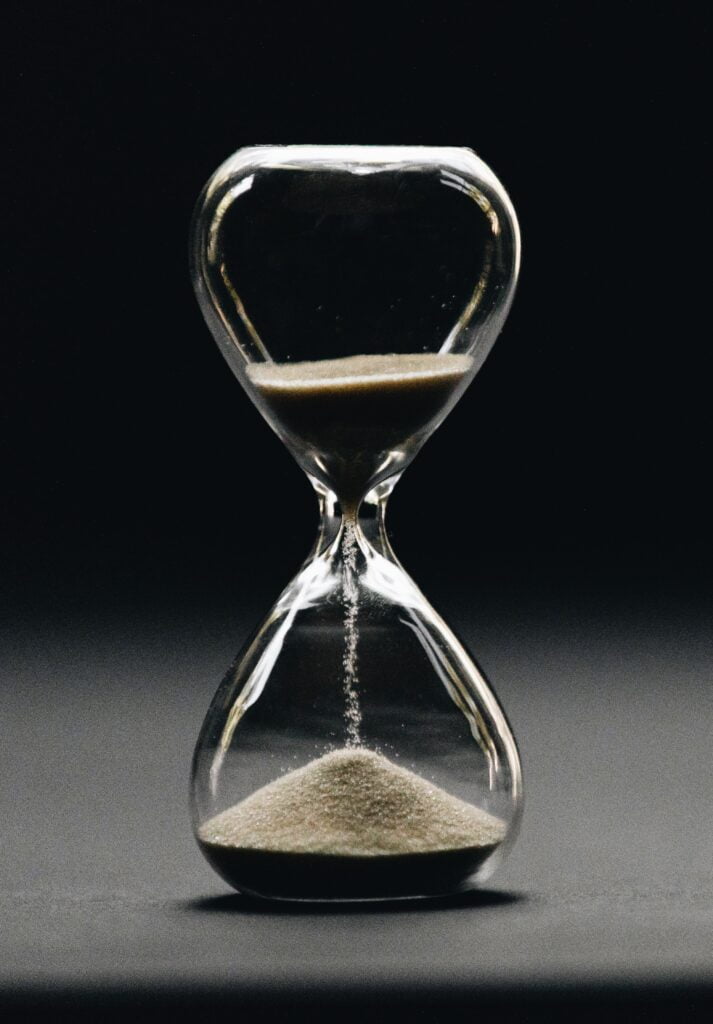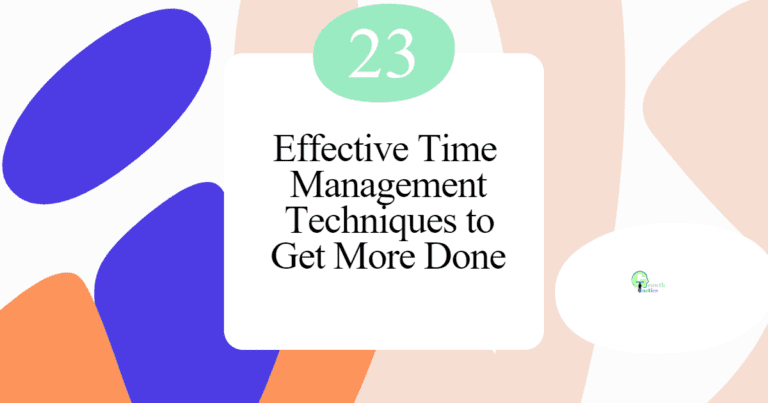Time management is the process of planning and organizing how you divide your time between specific activities to increase efficiency and productivity. It involves prioritizing tasks, setting goals, and adopting strategies to make the most of your available time. In our fast-paced world, effective time management is essential to ensure that we accomplish our tasks and goals.
Jump To Section
What is Time Management?
Time management is a skill that allows you to allocate your time effectively and efficiently to achieve your desired outcomes. It involves recognizing what is important, planning ahead, and staying on track to ensure productivity and success. It helps you make conscious choices about how you prioritize and spend your time, ultimately leading to improved efficiency and reduced stress.

Why is Time Management Important?
Effective time management is crucial for several reasons:
- Increased Productivity: By managing your time effectively, you maximize your productivity and accomplish more in less time.
- Reduced Stress: Proper time management reduces feelings of overwhelm and allows you to approach tasks with a clear mind.
- Improved Decision Making: By prioritizing and organizing tasks, you make better choices about what to focus on and when.
- Better Work-Life Balance: Time management helps you allocate time for both work and personal activities, fostering a healthier balance.
- Achievement of Goals: By efficiently managing your time, you are more likely to achieve your short-term and long-term goals.
“Mastering time management is the key to unlocking your potential. Discover 23 effective techniques that will transform your productivity and empower you to achieve more.”
Time Management Strategies and Skills
Here are some general time management strategies that can help you make the most of your time:
Make a To-Do List
First things first, grab a notebook or better yet, your trusty digital device. Start by brain-dumping everything that’s been floating around in your mind – tasks, deadlines, appointments – you name it. Don’t worry about organizing just yet, just get it all out there.
Then, take a deep breath and get ready to prioritize. Look at your list, identify the most urgent and important tasks, and give them top priority. Break down bigger tasks into smaller, manageable steps to make them less daunting.
Now, here comes the fun part. Take your colored markers or digital labels and categorize your tasks. By grouping similar tasks together, you’ll be able to tackle them more efficiently. Oh, and don’t forget to add time estimates next to each task! It’ll help you better plan your day.
Lastly, reassess your list at the end of each day, tick off completed tasks, and carry over any unfinished ones to the next day. And there you have it. Your very own to-do list.
Tackle the Most Difficult Task First
Start your day with the most challenging task when your energy and focus are at their peak. By completing the toughest task, you’ll feel a sense of accomplishment and be motivated to tackle the rest of your to-do list.
Remove Any Distractions
Minimize distractions like social media notifications, unnecessary emails, and noisy environments. Find a quiet place where you can fully concentrate on your tasks.
Lead a Healthier Lifestyle
A healthy lifestyle contributes to better time management. Ensure you get enough sleep, exercise regularly, and maintain a balanced diet. A healthy body and mind increase your energy levels and productivity.
Figure Out and Set Your Priorities
Identify your most important tasks and goals. Set clear priorities to avoid wasting time on less important activities.
Try Out Software
Use time management software or apps to help you stay organized and on track. Software like project management tools or time-tracking apps can assist in managing tasks and allocate time effectively.
Here are some software options to assist you with time management. These tools can help you stay organized, increase productivity, and make the most out of your day:
- Todoist – A popular task and project management tool that lets you create to-do lists, set reminders, and collaborate with others.
- Toggl – A simple time-tracking app that lets you track how much time you spend on different tasks or projects. It helps you identify where your time is going and make necessary adjustments.
- RescueTime – This software runs in the background and tracks your computer and mobile usage. It provides detailed reports on how you spend your time, helping you eliminate distractions and improve productivity.
- Calendly – A scheduling tool that eliminates the back-and-forth of finding mutually convenient meeting times. It syncs with your calendar and enables others to book time slots with you effortlessly.
- Evernote – A comprehensive note-taking app that allows you to capture ideas, create to-do lists, set reminders, and even save web pages. It helps you stay organized and access your information across various devices.
- Asana – A powerful project management software that simplifies teamwork and task management. It enables you to assign tasks, set deadlines, and track progress easily.
For more apps to boost your productivity, check out this list of 24.
Remember to explore these tools and pick the one that aligns best with your needs and preferences.

More Time Management Techniques
Now, let’s explore some specific time management techniques that you can implement to boost your productivity:
The Pomodoro Technique
The Pomodoro Technique involves working in focused, uninterrupted intervals called “Pomodoros.” Set a timer for 25 minutes and work on a specific task until the timer goes off. Take a short break, then repeat the process. After completing four Pomodoros, take a more extended break.
The Eisenhower Matrix
The Eisenhower Matrix, also known as the Urgent-Important Matrix, helps you prioritize tasks based on their urgency and importance. Sort your tasks into four categories: urgent and important, important but not urgent, urgent but not important, and neither urgent nor important. Prioritize tasks accordingly.
Parkinson’s Law
Parkinson’s Law states that work expands to fill the time available for its completion. Set specific deadlines for tasks to prevent them from taking longer than necessary.
The Kanban Technique
The Kanban Technique involves using a visual board or chart to track your tasks. Divide your board into columns such as “To-Do,” “In Progress,” and “Completed.” Move tasks through the columns as you progress.
Getting Things Done or GTD
The GTD method focuses on capturing all your tasks, ideas, and commitments in a trusted system. Break tasks down into actionable steps and regularly review and update your task list.
The Time Blocking Method
Time blocking involves scheduling specific blocks of time for particular tasks or activities. It helps allocate your time effectively and ensures that essential tasks are not overlooked or pushed aside.
The Pickle Jar Theory
The Pickle Jar Theory teaches us to prioritize important tasks first, metaphorically representing them as large rocks that need to be placed in a jar before filling it with smaller rocks (less crucial tasks) and sand (minor activities).
Eat That Frog
The “Eat That Frog” technique, popularized by Brian Tracy, suggests tackling the most difficult and important task first thing in the morning. By doing so, you eliminate procrastination and build momentum for the rest of the day.
Timeboxing Technique
Timeboxing involves assigning specific time blocks to tasks, and limiting the amount of time for each activity. This technique helps improve focus and prevents tasks from expanding beyond their designated time limits.
Deep Work
Deep Work is a concept coined by productivity expert Cal Newport. It involves creating a focused and distraction-free environment to maximize productivity during dedicated work sessions.
The “ABCDE” Method
This method helps categorize and prioritize tasks based on their importance and urgency. Assign labels from A to E to each task, with A being the most critical and E being the least important. Start with the A tasks, then move to B, and so on.
The Rapid Planning Method or RPM
The RPM method, developed by Tony Robbins, involves planning tasks according to their desired outcomes. Instead of focusing on a specific to-do list, you define the results you want to achieve and establish action steps to accomplish those outcomes.
The SMART Method
The SMART method helps you set specific, measurable, achievable, relevant, and time-bound goals. By setting clear goals, you can direct your focus and efforts toward achieving them.
The POSEC Method
The POSEC method focuses on prioritizing tasks based on your roles and responsibilities. It involves categorizing tasks into the following areas: Prioritize, Organize, Streamline, Economize, and Contribute.
Biological Prime Time Technique
Each person has specific times during the day when they are most alert and productive. Identify your biological prime time and schedule your most important tasks during this period for maximum efficiency.
The Pareto Analysis Technique
The Pareto Analysis, also known as the 80/20 rule, suggests that 20% of your efforts typically yield 80% of your results. Identify the most impactful tasks and focus on them to maximize your productivity.
The 1-3-5 Technique
The 1-3-5 technique involves setting one big task, three medium tasks, and five small tasks for each day. This method helps prioritize tasks effectively and ensures a balanced workload.
Conclusion
Time management is crucial for accomplishing tasks efficiently and effectively. By implementing these time management techniques and strategies, you can increase productivity, reduce stress, and achieve your goals. Experiment with different methods to find what works best for you, and remember that effective time management is a continuous process of learning and adaptation.


